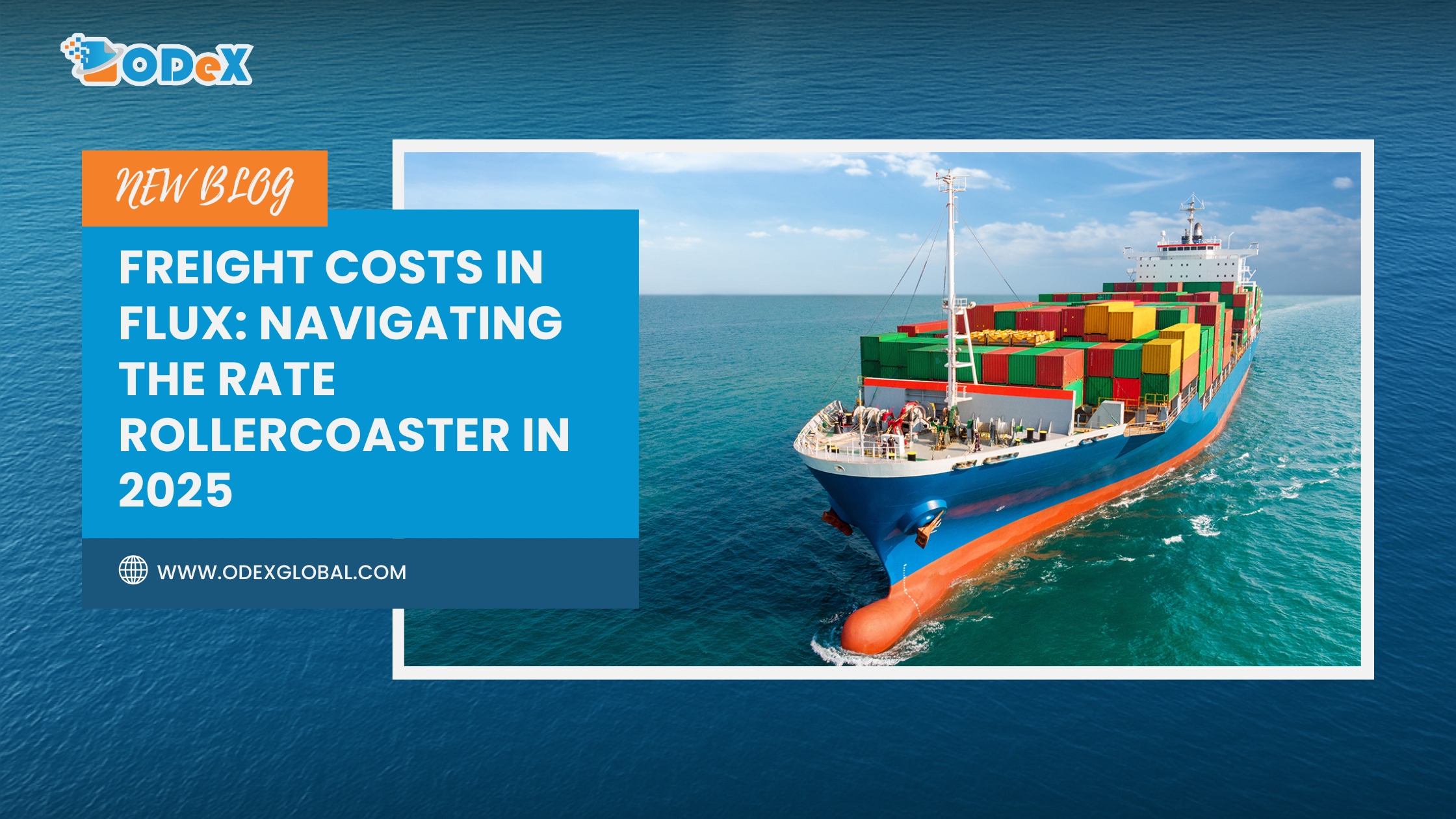Freight costs in flux: Navigating the rate rollercoaster in 2025
The first half of 2025 has been anything but steady for the global shipping and freight industry.
Spot rates have swung dramatically across major trade lanes, driven by a perfect storm of geopolitical events, climate disruptions, shifting consumer demand, and port operational challenges.
For freight forwarders, truckers, and shippers, this turbulence has not only impacted bottom lines, it has underscored the urgent need for agility, transparency, and streamlined operations.
As costs continue to fluctuate, those who can move cargo quickly, manage documentation efficiently, and avoid unnecessary penalties are better positioned to ride out the chaos.
What is driving freight rate instability in 2025 and what supply chain professionals can do to regain control?
Freight Rate Volatility - what the numbers are and what they mean
The Trans-Pacific spot rate market has shown extreme volatility in recent months.
According to the Freightos Baltic Index, Asia–U.S. West Coast spot rates climbed from $2,462 per FEU in mid-May 2025 to approximately $5,488 per FEU in early June 2025, a ~123% increase in just three weeks.
Similarly, Xeneta reported that rates surged by 88% in the same period, citing constrained vessel capacity and increased fuel costs due to rerouting around the Cape of Good Hope.
These sharp increases stem from continued vessel diversions around the Red Sea, a practice now in its second year, but further amplified in 2025 by pre-peak season demand and tighter sailing schedules.
Although security escorts and increased regional patrols allowed some carriers to cautiously re-enter the Suez route in June, capacity remains strained, keeping rate levels significantly above early-year baselines.
For U.S. inland operators, this ocean-side disruption has downstream effects. Port schedules fluctuate, container availability becomes harder to predict, and dispatch timelines for truckers narrow.
When vessels arrive in bunches or are delayed en route, it leads to overbooked gates, missed appointments, and inconsistent revenue opportunities for drayage operators and small fleets.
What Is driving the volatility?
1. Geopolitical Disruption
Tensions in the Red Sea region - old Houthi challenges and the new Iran-Israel conflice, and changing alliances continue to force carriers to reroute vessels, adding significant transit time and cost.
2. Port congestion and labour issues
Strikes in Europe, chassis shortages in the U.S., and equipment imbalances in Asia have further strained capacity.
3. Seasonal and retail demand cycles
With consumer sentiment swinging between optimism and caution, importers are adjusting inventory levels more frequently.
4. Fuel prices and green shipping surcharges
Rising bunker fuel prices and the expanded enforcement of EU ETS and other emissions-related levies are adding new cost layers for shippers.
How this affects the game on the ground
While ocean carriers negotiate long-term contracts and adjust routes accordingly, it is the freight forwarders, truckers, and hauliers who often absorb the most day-to-day pressure. Delivery schedules change at short notice.
Documentation must be updated to reflect new arrival times and terminal assignments. Payments must be cleared quickly to avoid demurrage, detention, and missed pickup windows.
Truckers, in particular, are caught between rising operational costs and delayed container releases. A simple delay in the confirmation of a delivery order or invoice payment can mean hours of unproductive waiting, or worse—turning up at a terminal only to be turned away.
Strategic responses: What smart operators are doing
To stay competitive, logistics professionals are increasingly turning to digital solutions that eliminate administrative bottlenecks and allow faster decision-making.
Real-time rate monitoring tools and predictive analytics are growing in adoption, but so are platforms that manage the “unseen” friction in the system—documentation, payment clearance, and cargo release.
Here are a few tactics gaining ground:
- Renegotiating contracts with built-in volatility clauses
- Using port-linked appointment scheduling tools
- Prioritising vendor relationships that offer flexible payment terms
- Digitising freight documents to avoid customs delays
The quiet culprit: Slow documentation and payment processing
While macroeconomic and geopolitical issues dominate headlines, many logistics professionals agree that internal delays in paperwork and payments remain some of the most avoidable costs in today’s environment.
A container stuck at port for even 24 hours due to an unpaid invoice or missing document can trigger hundreds or thousands of dollars in fees. Multiply that by dozens or hundreds of shipments a month, and the impact is clear.
How ODeX is helping customers
ODeX has been quietly improving the lives of forwarders, truckers, and carriers by simplifying documentation workflows and enabling real-time payment clearance.
Instead of emailing invoices, waiting on bank wires, or calling terminals for release confirmation, users can:
- Pay online instantly, including via wallet, card, or deferred payment options
- Access and upload release documentation in one place
- Track payment and document status before dispatching a truck to port
In a volatile cost environment, this level of control helps avoid cascading fees, missed opportunities, and lost trust with clients.
Conclusion: Clarity beats chaos
Freight rates will continue to move. That much is certain. But the winners in this volatile market will not be the biggest companies, they will be the most prepared.
Documentation delays, payment confusion, and visibility gaps are not just administrative problems anymore. They are direct threats to margins.
In 2025, controlling what you can—through faster processing, better data, and simplified systems—may be your best defence against what you cannot control. And that is where quiet efficiency, not loud technology, delivers the most value.


















